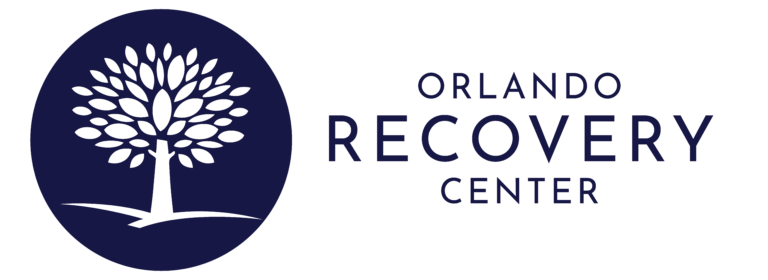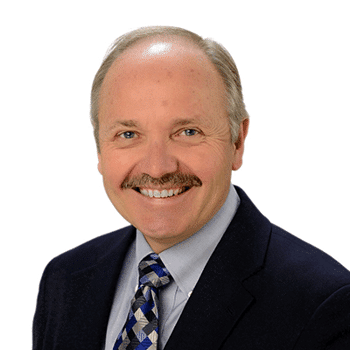Key Takeaways
- Opioid addiction is a severe health crisis, and rehabilitation programs are essential for recovery.
- The cost of opioid rehab is influenced by treatment type, duration, and location.
- Inpatient rehab programs are more expensive than outpatient programs due to the 24-hour care and residential services they provide.
- The duration of treatment varies significantly, with some patients only requiring a few weeks and others require on-going care lasting months or years.
- Generally, rehab facilities in areas with a higher cost-of-living will cost more than rehab facilities located in more affordable locations.
- Insurance coverage, including Medicare and Medicaid, often help defray some of the costs for opioid rehabilitation.
- Alternative financing options are also available and include state-funded programs, grants, and payment plans.
- Crowdfunding and general fundraising can also help cover treatment expenses for those facing financial barriers.
The Importance of Rehab for Opioid Addiction
Opioid addiction is a severe and chronic medical condition characterized by the compulsive use of opioid drugs despite the harmful consequences it causes. Many people find that it is nearly impossible to recover from such an addiction without professional help.
Fortunately, there are rehabilitation programs available that are designed to help individuals stop using opioids, manage withdrawal symptoms, and build a foundation for long-term recovery.
However, people considering such a rehabilitation program are often curious about the costs involved. We’ll explain some of the factors that influence the cost of opioid rehab programs, as well as some of the alternative financing options available below.
Factors Influencing Opioid Rehab Costs
The cost of opioid rehabilitation is influenced by a myriad of factors, each playing a significant role in the overall financial burden of treatment.
Treatment Can Be Life Changing
Whether you are struggling with addiction, mental health or both, our expert team is here to guide you every step of the way. Don’t wait— reach out today to take the first step toward taking control of your life.
Program Type: Inpatient vs. Outpatient
Opioid treatment programs are typically offered in both inpatient and outpatient forms.
- Inpatient rehab: These programs require individuals to reside at the facility, offering 24-hour care, structured treatment programs, meals, and accommodations. Also known as residential treatment, inpatient rehab generally costs more than outpatient rehab due to the comprehensive nature of the services provided.
- Outpatient rehab: Outpatient programs allow individuals to live at home while receiving treatment. This can include therapy sessions, group meetings, and other forms of support, typically scheduled around work or school commitments. The cost for outpatient services is often lower as it does not include residential accommodation or the same level of intensive care.
While costs will obviously factor into a patient’s choice of an inpatient or outpatient rehabilitation program, this shouldn’t be the only factor considered. The decision should also be guided by the severity of the addiction, individual health needs, personal circumstances, and the recommendations of the substance abuse specialists guiding your care.
Treatment Duration
The duration of an opioid rehabilitation program is a pivotal factor that significantly influences the overall cost of treatment.
The cost of opioid rehab is typically calculated on a per-day basis, and as such, longer programs inherently increase the total expense. Short-term programs may last 30 days, while long-term treatment can extend to 90 days or more, each with varying cost implications.
The program type also factors in with the duration of treatment.
Inpatient programs generally last approximately 30 to 90 days, though they may stretch to 6 months or more in severe cases. Outpatient programs, on the other hand, differ markedly in their duration. Some patients may only need to stay in the program for a matter of weeks, while other patients may need to remain in the program for 1 year or longer.
It is also important to note that those using medications like methadone, buprenorphine, or naltrexone, may need to remain in some type of treatment program for years.
Geographic Location
The geographical location of an opioid rehabilitation center is a significant factor influencing the cost of treatment.
In areas with higher costs of living, such as major metropolitan regions, the expenses associated with running a rehab center, including staff salaries, facility maintenance, and operational costs, are generally higher. This can translate into higher treatment costs for patients.
Conversely, rehab centers in regions with a lower cost of living may have lower operational costs and can offer more affordable treatment options.
Does Insurance Cover Opioid Rehabilitation?
Yes, many health insurance plans cover opioid rehab to some extent, though the specifics of coverage can vary widely depending on the insurance provider and the individual plan. Some plans will cover all of the costs associated with rehabilitation, while others will only pay for some portion of the care.
Some of the factors influencing insurance coverage for opioid addiction include:
- The type of insurance plan: Some private insurance plans provide rehabilitation coverage, while others do not. Public programs like Medicaid and Medicare typically provide coverage for addiction treatment, though the specifics vary from state to state and individuals seeking treatment will need to qualify for these programs.
- The extent of services covered: Addiction treatment is multifaceted, and the individual components covered vary from one policy to the next. For example, some policies may only cover outpatient treatment, while others cover inpatient treatment as well as on-going aftercare.
- Co-pays and deductibles: Some plans involve deductibles that must be met before they begin covering services. Additionally, some plans require patients to make co-payments to secure treatment.
Consult the details of your specific plan or contact your insurance provider to determine whether or not opioid rehabilitation will be covered.
Do Medicare and Medicaid Cover Opioid Rehabilitation?
While they are technically health insurance programs, Medicare and Medicaid both differ from conventional insurance programs in many ways. Nevertheless, they do provide help in paying for opioid rehabilitation for some patients.
- Medicaid: Medicaid provides coverage for substance use disorder (SUD) treatment, including opiate rehab, for eligible low-income individuals. Coverage varies by state, but many states have expanded Medicaid to include comprehensive addiction treatment services.
- Medicare: Medicare also provides assistance for some individuals. Medicare Part B covers outpatient substance use disorder services, including counseling and therapy. Meanwhile, Medicare Part D provides coverage for medications used in MAT.
Alternative Financing Options for Opioid Rehabilitation
Fortunately, there are a number of alternative financing options for individuals unable to afford the cost of opioid rehabilitation. These options include grants and payment plans, as well as crowdfunding and general fundraising.
Grants for Opioid Rehabilitation
Access to financial support through grants is a critical component for many individuals seeking opioid rehabilitation. A few of the most noteworthy scholarship and grant programs for opiate rehabilitation include:
- Federal Grants: The Substance Abuse and Mental Health Services Administration (SAMHSA) offers Medication-Assisted Treatment (MAT) Access Grants, which expand access to MAT for individuals with opioid use disorders.
- State-Specific Grant Programs: Many states have programs that provide financial assistance for addiction treatment. Examples include state opioid response grants and state health department funding.
- Private and Non-Profit Grant Programs: Various nonprofit organizations provide grants for addiction treatment. Examples include The Herren Project, 10,000 Beds, The Robert Wood Johnson Foundation, and Kresge Foundation.
- Private Foundation Grants: Some private foundations offer grants and financial assistance for addiction treatment. Additionally SAMHSA partners with private foundations to support individuals seeking treatment.
- Corporate Grants: Many large corporations and their foundations offer grants to support community health initiatives, including substance abuse treatment. Examples include the CVS Health Foundation and the McKesson Foundation.
Payment Plans for Opioid Rehabilitation
Payment plans are another viable option that helps many individuals afford opioid rehabilitation.
Payment plans typically involve breaking down the total cost of treatment into smaller, more manageable monthly payments. This approach allows patients to receive the care they need without being forced to cover the full financial burden upfront.
Facilities often work with patients to determine a payment schedule that aligns with their ability to pay, taking into account their income and expenses. Some centers also offer sliding scale fees based on income, which can further reduce costs for those with limited financial resources.
It’s always wise to seek assistance from your treatment provider if you’re having difficulty affording the care you need. They may guide patients toward programs offering reduced fees or payment assistance.
Crowdfunding and Fundraising for Opioid Rehabilitation Costs
Crowdfunding and fundraising have emerged as viable options to cover the treatment expenses associated with opioid rehabilitation.
Crowdfunding platforms enable people to create online campaigns to raise money for personal causes, including healthcare costs. These platforms can be particularly effective when the individual’s story resonates with the public, often leading to generous donations from a wide network of supporters.
Similarly, fundraising events, such as charity runs, benefit concerts, or community auctions, can mobilize local communities to support those in need of opioid treatment. Such events not only raise funds but also increase awareness about the opioid crisis and the importance of accessible rehabilitation services.
Get Help for Opioid Use Disorder
If you or a loved one struggles with drug or alcohol addiction, Orlando Recovery Center is here to help. Our physician-led, evidence-based rehab programs include medical detox, inpatient and outpatient rehab, and a full continuum of care in between. Our compassionate team will help you start life fresh with the tools, coping strategies and resources you need to succeed. We can even help review some of the payment options available to you, to help you afford the care you need.
Don’t wait — contact a Recovery Advocate today to see how we can help.



